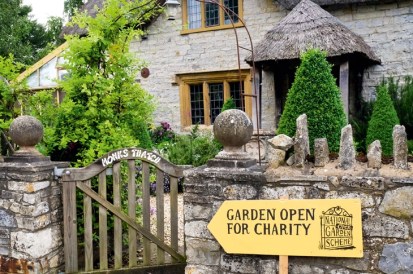I hesitate ever to criticise an author for the inappropriateness of a book’s title, since it’s more likely the fault of someone in marketing, who’s had a Bright Idea. But whoever is the culprit, the omission of the dates ‘1650–1800’ from the dust jacket certainly risks annoying the bookshop browser, who may grumpily set the book to one side in a huff.
This would be a pity, since there is a great deal of value in Mark Laird’s exposition of his multifarious research projects. He is senior lecturer in landscape architectural history at Harvard Graduate School of Design, but probably best known this side of the Atlantic for the leading part he took in the restoration of Painshill, that most delightful of 18th-century gardens, near Cobham in Surrey. Laird’s preoccupations include John Evelyn, the diarist, and his garden at Sayes Court, the naturalist Gilbert White at Selborne, the collagist Mrs Delany, the gardening Duchess of Beaufort, the plant collectors Mark Catesby and John Bartram — who, with the financial support of Peter Collinson, ensured the introduction of many American exotics to make shrubberies in English landscape gardens — not to mention the animal-keeping Duke of Richmond and the bird-loving Princess Augusta at Kew.
At the beginning of each chapter is an apposite watercolour painted by the author, together with a useful synopsis. His avowed aim is to try ‘to find common ground in the early modern period by linking the ordering of the garden to the quest for order within the natural world’; and in that he has succeeded. He is not concerned with the English 18th-century garden-making of Bridgeman, Kent and Brown, but rather the business of gardening itself, particularly where it bumps up against wildlife, the environment and the weather.

Laird points up connections between developments or occurrences in the horticultural sphere and climatic events: for example, the terrible drought of 1762 described by White, the loss of Evelyn’s exotic plants and pet tortoise in the bitterest winter of 1683–4 (when there was a Frost Fair on the Thames) and the destruction of Evelyn’s woods by the great storm of 1703. Incidentally, the accounts of the last sound scarily like those of our own great storm of October 1987, which also had a marked impact on thinking about gardens and tree-planting.
The general reader will probably know of the great collector of natural history objects, the Duchess of Portland (1715–1785), who was also patroness of both the pre-eminent botanical artist, Georg Dionysius Ehret and the collagist, Mary Delany, but may be less familiar with Mary, Duchess of Beaufort at Badminton (1630–1715). She grew exotic plants in some of the earliest hothouses and made an impressive Florilegium and Herbarium as an antidote to her ‘mopishness’, poor woman. I confess I knew nothing at all of the astonishingly intrepid Maria Sibylla Merian (1647–1717), who went to Surinam, of all places, to paint insects.
The book weighs five and a half pounds, so it’s not a book for bedtime. In truth, this is an academic work dressed up to look like a coffee-table book and in places the writing, though always lucid and fizzing with ideas, is a bit of a chew. But though pretty dense it is not impenetrable, and reading it is certainly one way of getting up to speed with strands of 18th-century thought on gardening in time for the Capability Brown tercentenary celebrations next year.

For me, the greatest fascination lies in the appropriate, and often extremely alluring, images which appear in full colour on every page — unlike Laird’s The Flowering of the Landscape Garden of 1999 which is entirely monochrome. Particularly attractive are Alexander Marshal’s flower compositions, from his Florilegium held in the Royal Library, as well as Ehret’s truly remarkable botanical paintings. There is also a clutch of revealing landscape paintings, although some are a little murky in reproduction.
Readers may be hard pressed to find an overarching unity in the disparate elements of this book. Indeed, Laird does not claim such a thing is possible. ‘The best hope,’ he says, ‘is for a reconstruction of fragments of finely-worked tissue.’ That seems to me to be about right, if a little disappointing. But this is still a rewarding book to browse, both because of the variety and the quality of the illustrations and the light the commentary casts on amateur, and particularly female, scientific and horticultural enquiry during the Age of Enlightenment.
Available from the Spectator Bookshop, £40 Tel: 08430 600033. Ursula Buchan is the author of A Green and Pleasant Land: How England’s Gardeners Fought the Second World War.






Comments